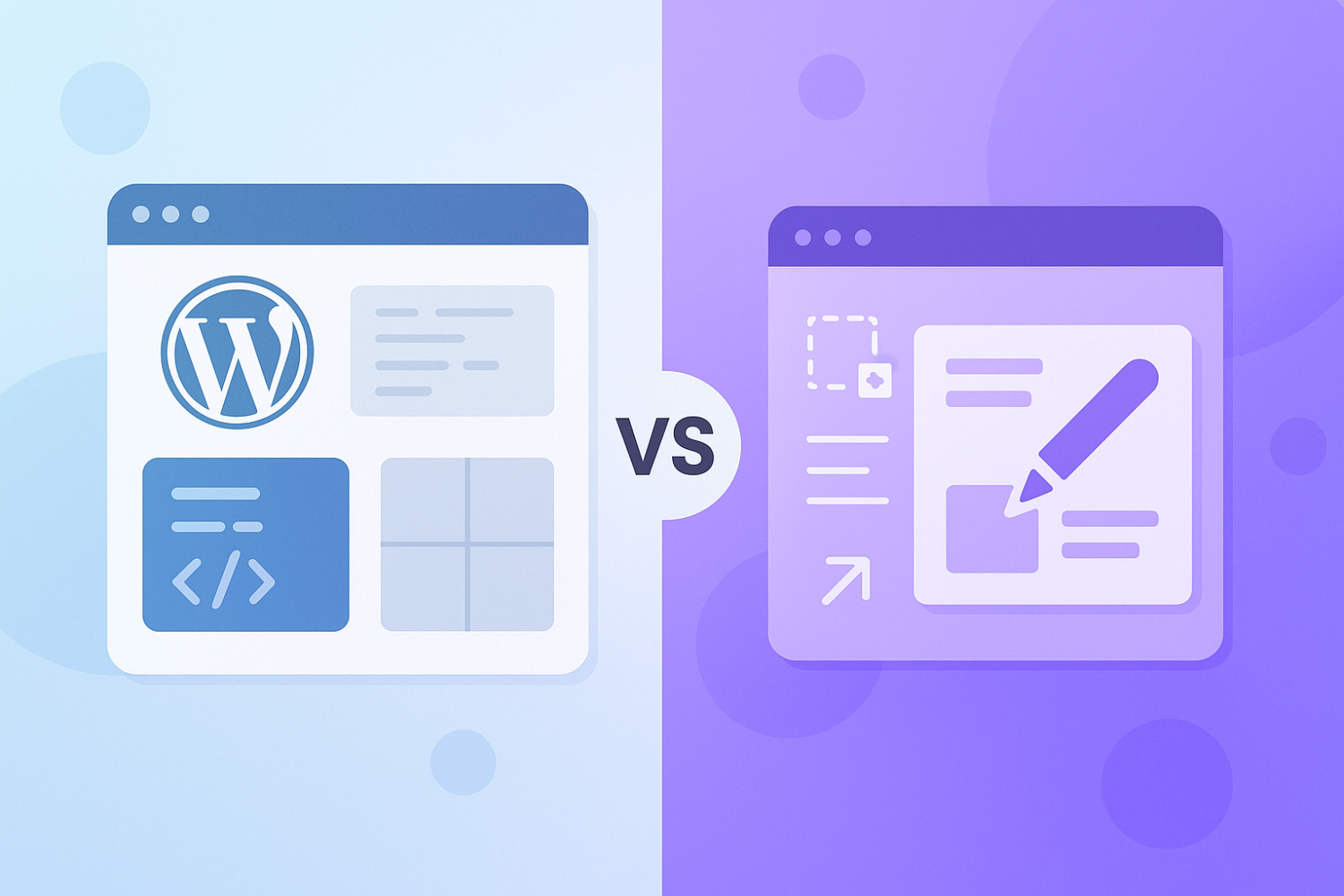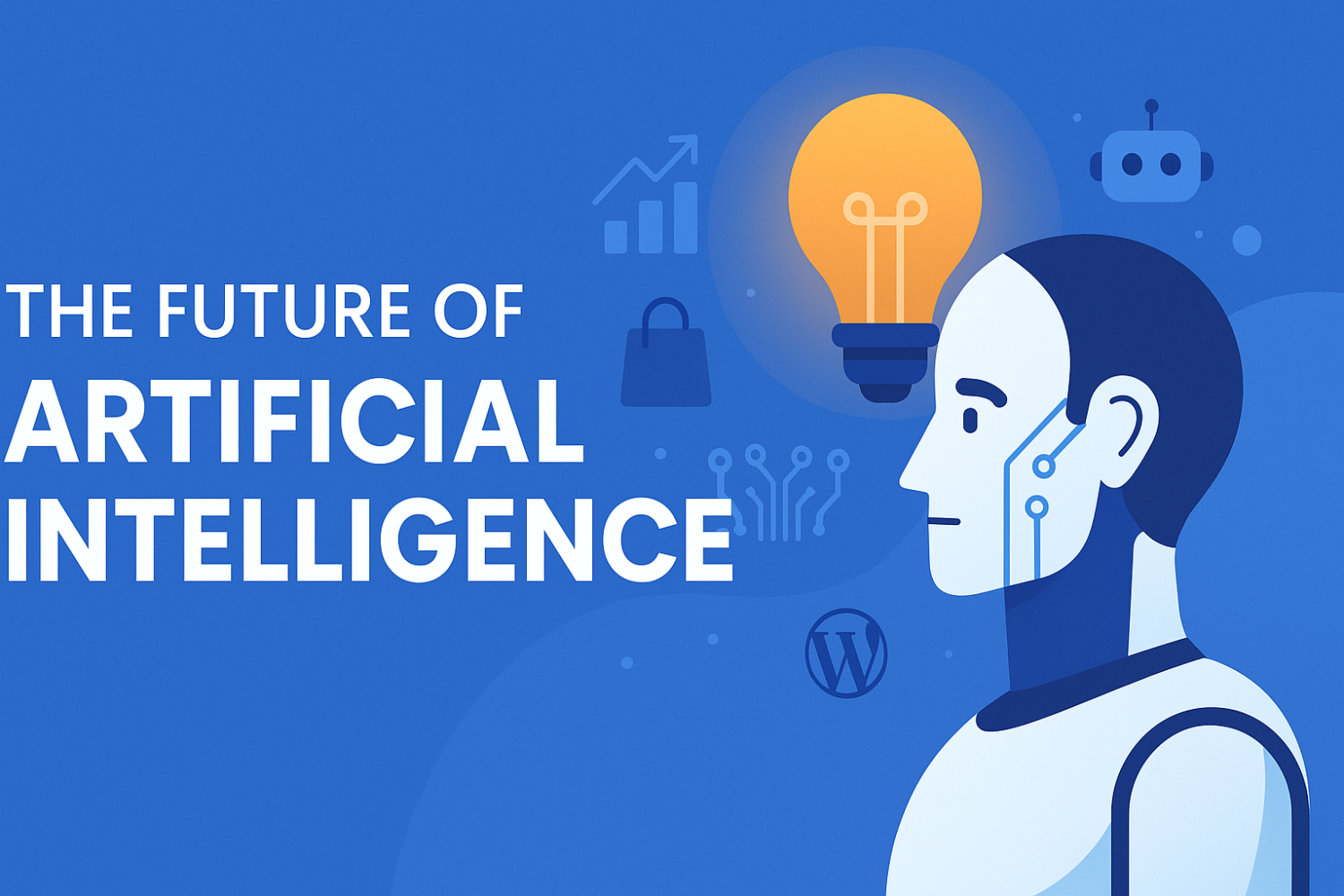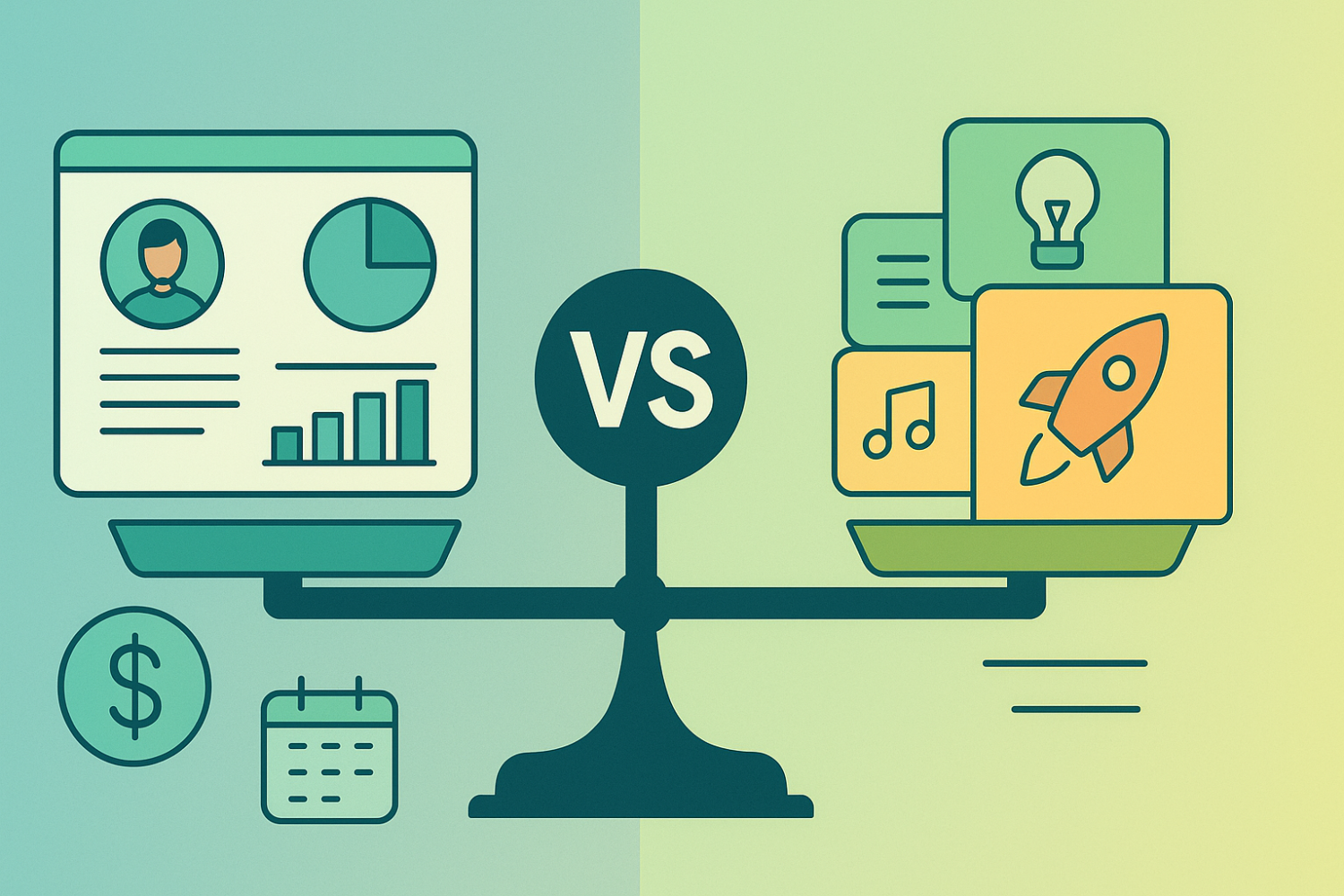Traditional WordPress Themes vs. Elementor Template Kits: Which is Right for You?

Introduction to WordPress Design Options
Website design is a fundamental aspect of establishing an online
presence, and choosing the right tools is essential for achieving an
appealing layout. In the realm of WordPress, two popular options are
traditional WordPress themes and Elementor template kits. Understanding
these choices is crucial for users, especially beginners in website
design, as the selection can significantly impact both functionality and
aesthetics.
Traditional WordPress themes are pre-designed layouts that dictate how a website appears and operates. These themes are housed within the WordPress repository and can be free or premium. They provide a consistent framework, allowing users to customize various aspects such as colors, fonts, and widgets, although the degree of customization can sometimes be limited. This typically leads to a more uniform experience across different websites using the same theme, which may not cater to unique branding needs.
On the other hand, Elementor template kits offer a more dynamic approach. Built specifically for use with the Elementor page builder plugin, these kits consist of a collection of pre-designed templates and blocks that can be easily customized. This flexibility allows for greater creativity, enabling users to construct unique designs without extensive coding knowledge. As a result, Elementor serves to bridge the gap between those seeking customized website design and users who may not have the technical expertise to build from scratch.
For beginners interested in WordPress, understanding the differences between traditional themes and Elementor template kits is vital. The choice made could influence not only the visual appeal but also the functionality of the website. By examining the characteristics and capabilities of each option, individuals can make more informed decisions, paving the way for effective website design for beginners.
Understanding Traditional WordPress Themes
Traditional WordPress themes have long been the cornerstone of website design within the WordPress ecosystem. They offer a structured framework for creating a website, encompassing various elements such as layout, typography, and colors. Typically, these themes are available in two categories: free and premium. Free themes can be easily accessed through the WordPress repository, granting users the essential features to get started with website creation. On the other hand, premium themes often come with advanced functionalities, responsive designs, and dedicated support, making them a favorable option for professionals and businesses.
The structure of traditional WordPress themes primarily consists of template files that control the layout and style of individual pages. Common files include the header, footer, and sidebar, as well as specialized templates for different content types, such as posts and pages. This modular approach facilitates customization but may require more in-depth knowledge of HTML and CSS for complex adjustments. Additionally, traditional themes generally provide a customization panel where users can modify basic settings, such as logos, colors, and fonts, yet they might not allow extensive alterations without coding.
While traditional WordPress themes can be user-friendly, they may pose limitations for those seeking a unique website design. Users might find themselves constrained by the predefined styles and layouts, which could hinder creativity, especially when compared to newer design tools. In contrast, page builders like Elementor contribute a different approach to website design for beginners by providing intuitive drag-and-drop functionalities, allowing for greater customization without requiring extensive coding knowledge. Evaluating traditional WordPress themes in comparison to Elementor templates is vital for those determining the best way to build a WordPress site that meets their needs.
Exploring Elementor Template Kits
Elementor template kits represent a modern approach to website design, particularly for those utilizing the WordPress platform. Unlike traditional WordPress themes that may present a static framework, Elementor template kits offer a collection of pre-designed layouts and components designed specifically for use with the Elementor page builder. This distinction allows users to easily customize their websites without requiring extensive coding knowledge, appealing especially to beginners and those looking for a streamlined design process.
One of the standout features of Elementor template kits is their intuitive drag-and-drop interface. This functionality enables users to select and position elements on their website seamlessly, considerably simplifying the website creation process. As a result, website design for beginners becomes significantly more accessible, allowing them to focus on the aesthetics and usability rather than the underlying technical complexities. In contrast, traditional themes typically involve a more rigid setup that can limit customization options and necessitate a deeper understanding of HTML, CSS, or other coding languages.
Moreover, Elementor template kits come with a variety of pre-built pages that cater to different needs, including landing pages, portfolios, and online stores. This flexibility allows users to create a visually coherent website quickly, significantly enhancing the overall efficiency of the design process. When comparing Elementor vs traditional themes, it becomes clear that template kits provide a more versatile and user-friendly experience, empowering users to bring their vision to life without the need for extensive technical expertise.
Ultimately, Elementor template kits are an excellent choice for individuals seeking to create a stunning website with minimal hassle. Their features cater to both novice and experienced users, making them an attractive option in the ongoing discussion of WordPress vs Elementor. Whether you are venturing into website design for the first time or looking to create a unique online presence, exploring Elementor template kits can be one of the best ways to build a WordPress site that stands out.
Customization: A Key Factor in Web Design
When evaluating WordPress vs Elementor, one critical aspect to consider is customization. Customization options can significantly influence the user experience and overall aesthetic of a website. Traditional WordPress themes often come with pre-set layouts, colors, and functionalities which can limit creativity. While many themes offer some degree of customization, making extensive changes typically requires a solid understanding of CSS and HTML. This aspect may pose challenges for beginners who are navigating the intricacies of website design.
On the other hand, Elementor template kits provide a more intuitive customization experience. As a popular page builder plugin for WordPress, Elementor allows users to create highly versatile and responsive designs without the need for coding knowledge. Users can drag and drop elements, choose from a plethora of design widgets, and customize every aspect of their website's appearance. This makes Elementor an appealing choice for those seeking flexibility in web design, particularly for beginners who may feel overwhelmed by the technicalities involved in traditional methods.
Moreover, Elementor's framework supports live editing, meaning users can view their changes in real-time, facilitating a more enjoyable and streamlined design process. In contrast, traditional themes require users to switch between the editor and preview mode, making it less efficient for implementing design ideas swiftly. Furthermore, Elementor's extensive library of templates significantly simplifies the creation process; users can choose a ready-made layout that aligns with their vision, which stands in stark contrast to the more rigid structure of many traditional WordPress themes.
In conclusion, when weighing the advantages of WordPress vs Elementor, the key factor of customization is vital. Elementor template kits clearly cater to designers seeking flexibility and ease of use, making them an excellent option for website design for beginners, while traditional themes may better suit those looking for more structured layouts. Beginners seeking the best way to build a WordPress site should consider these aspects when determining their approach to web design.
Speed and Performance Considerations
When evaluating the effectiveness of WordPress vs Elementor, one of the primary concerns is the impact on speed and performance. Both traditional WordPress themes and Elementor template kits have their own merits, but they can significantly affect how quickly a website loads and how well it performs under various conditions. Understanding these differences is crucial for anyone embarking on website design for beginners or looking to optimize an existing site.
Traditional WordPress themes often have a lighter framework, leading to faster loading times. These themes are usually built with minimal code, ensuring that resource usage is kept to a minimum. This can result in a more streamlined experience for end-users, which is essential for retaining visitors and improving search engine rankings. On the other hand, Elementor template kits, while offering extensive customization options, can sometimes lead to heavier site files due to the additional functionalities and customizations available. If not properly optimized, these kits can negatively impact loading speeds.
Another important aspect to consider in the WordPress theme comparison is the inherent optimization capabilities of each option. While traditional themes may rely on pre-set features, Elementor allows users to add widgets and design elements that can enhance functionality. However, users must ensure that these additions do not cause the site to become bloated. Careful consideration of the elements included in an Elementor-based site is essential for achieving optimal performance.
Ultimately, the decision between Elementor vs traditional themes comes down to individual requirements. For those prioritizing speed and simplicity, traditional themes may be the best way to build a WordPress site. Conversely, for those looking for enhanced design flexibility, Elementor template kits offer an advantageous alternative—but users must remain vigilant regarding performance trade-offs.
Ease of Use: Which Option is More Beginner-Friendly?
When considering the best way to build a WordPress site, ease of use is a fundamental aspect for beginners. The choice between traditional WordPress themes and Elementor template kits can significantly affect user experience, especially for those who may not have prior design experience. Traditional themes often come with predefined layouts and functionalities that, while customizable to an extent, might require some coding knowledge or at least a familiarity with the WordPress dashboard. This learning curve can be daunting for newcomers attempting to navigate plugins, widgets, and theme options.
On the other hand, Elementor template kits present a more intuitive approach to website design for beginners. Elementor’s drag-and-drop interface simplifies the process of creating a website, allowing users to visually construct pages without needing to understand HTML or CSS. This user-friendly environment significantly reduces the cognitive load associated with website creation. Additionally, Elementor provides a rich library of pre-designed templates and blocks, enabling aspiring site developers to create visually appealing web pages quickly. This accessibility is a crucial factor when evaluating the WordPress vs Elementor debate.
Support resources are another element that impacts usability. Traditional themes often come with varying levels of documentation and support, making it challenging for beginners to find the help they need. In contrast, Elementor offers extensive tutorials and community forums to guide users through the process of designing their first website. This can be incredibly beneficial for those who may encounter issues along the way. In this regard, Elementor excels in fostering an environment conducive to learning at all skill levels.
In summary, for those new to website design, Elementor template kits offer a more beginner-friendly experience compared to traditional WordPress themes. Their straightforward functionality and strong support resources help demystify the website building process, making Elementor an appealing choice for novice users.
Flexibility for Personal and Business Websites
The choice between traditional WordPress themes and Elementor template kits significantly impacts the flexibility of website design for beginners as well as experienced developers. Each option caters to specific needs depending on the project scope, preferences, and functionality requirements. Traditional WordPress themes, for example, offer a structured approach that is particularly suitable for users seeking a straightforward setup with pre-defined layouts. This is especially advantageous for personal blogs or portfolios where the aim is to create a professional online presence without extensive customization. Users can select themes that reflect their personal branding and style while benefiting from the ease of installation and straightforward content management.
On the other hand, Elementor template kits provide a versatile alternative, appealing to users who prioritize customization and flexibility. These kits allow users to build unique layouts using drag-and-drop functionality, enabling the creation of visually compelling websites without needing advanced coding skills. For businesses requiring custom landing pages to showcase products or services, Elementor serves as an effective tool. Users can easily modify sections, integrate forms, and build complex page structures tailored to their specific audience, enhancing the effectiveness of marketing strategies.
Particularly, for a startup seeking to establish a brand presence online, the best way to build a WordPress site might include using Elementor, as it facilitates quick modifications and iterations based on user feedback. In contrast, established businesses may prefer the reliability of a traditional WordPress theme for maintaining a consistent brand identity across a range of services. The comparison between WordPress and Elementor underscores how different projects can dictate the need for either a rigid or flexible design, making it essential for users to evaluate their specific requirements before launching their websites.
Cost Comparison: Budgeting for Your Website
When embarking on the journey of web development, understanding the financial implications is crucial. The choice between traditional WordPress themes and Elementor template kits can significantly impact your budget. Traditional WordPress themes typically range from free to a one-time purchase fee, which can vary widely based on the theme's features and support options. Many premium themes are available for around $30 to $100, but it's essential to consider ongoing costs such as updates and support services, which are often limited with cheaper themes.
On the other hand, Elementor template kits also come in various price ranges. While many essential Elementor tools are free, to unlock the full potential, users often opt for the pro version. The Elementor Pro subscription can range from $49 for a single site to $199 for multiple sites annually. Users should also consider additional costs that may arise, such as purchasing specific add-ons or plugins that enhance the Elementor experience. These expenses can add up, particularly for those unfamiliar with website design for beginners, who may feel tempted to invest in multiple resources to achieve their desired results.
Another important factor involves the hidden costs associated with customization. Traditional themes often require users to have a reasonable understanding of coding or website design for beginners, which might lead to hiring experts for modifications. This can lead to significant unforeseen expenses, making Elementor template kits an appealing option, as they are designed to allow for easier customization and manipulation without extensive technical knowledge. Users often find Elementor's drag-and-drop interface to be more user-friendly, ultimately saving time and money. Evaluating the total costs involved in both options will ensure you select the best way to build a WordPress site aligned with your budget and needs.
Conclusion: Choosing the Right Tool for Your Needs
When it comes to selecting a design solution for your website, the decision between traditional WordPress themes and Elementor template kits can significantly impact your site's functionality and aesthetic appeal. Understanding the key differences is crucial for website design for beginners, who may find themselves overwhelmed by the myriad of options available in the market.
Traditional WordPress themes generally offer a fixed layout and a set of pre-defined features. These themes can be a suitable choice for users who prefer a straightforward approach and don’t require extensive customization. However, they may limit the design flexibility that many website owners desire. On the other hand, Elementor template kits provide a more dynamic design experience, allowing users to drag and drop elements, customize styles, and create a unique look tailored to their branding needs. This flexibility makes Elementor a preferred option among those looking to build visually appealing pages without extensive coding knowledge.
Moreover, it is essential to consider your individual goals and the best way to build a WordPress site that meets those objectives. If you're seeking to create a simple blog or a straightforward portfolio, a traditional theme may serve you well. Contrarily, if your intent is to develop a more complex e-commerce site or a portfolio with distinctive layout requirements, Elementor may prove to be a better fit. Elementor vs traditional themes ultimately boils down to your site's specific functionalities and your comfort level with website design.
In summary, both traditional WordPress themes and Elementor template kits have their unique advantages and disadvantages. The right choice hinges on your specific needs, technical ability, and design vision. By carefully assessing these factors, beginners can confidently navigate the Wordpress theme comparison and select the best tool that aligns with their goals for website creation.










